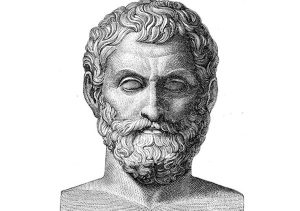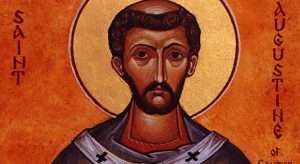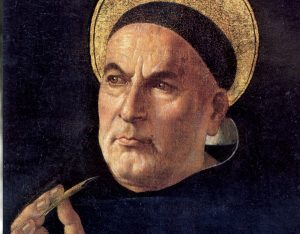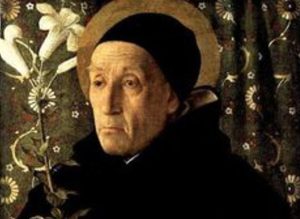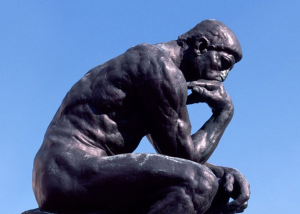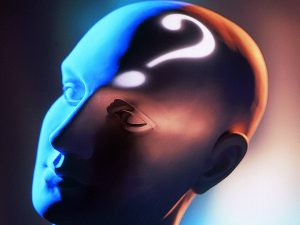What happened next was a revolution that rocked the Church and turned our view of the universe on its head – a scientific revolution that hinged on the work of Nicolaus Copernicus (1473-1543). It marked a big enough turning point that the publication of Copernicus’s On the Revolutions of the Celestial Spheres might be considered the moment at which the modern world began and the Middle Ages ended.
First, the Reformation began with Martin Luther (1483-1546) nailing his theses to a church door in Wittenberg in 1517. Gutenberg’s recently-developed printing press ensured that his ideas spread, and weren’t confined to a local dispute in Germany. Luther’s grievances were focused on the selling of papal indulgences – very worldly indeed. Luther’s revolt led to Protestantism, which split the power of the Church in Europe. The Reformation permitted religious pluralism, then religious scepticism, and ultimately atheism – which was not at all Luther’s aim. He wanted to reinvigorate and strengthen Christianity, but his reforms were the beginning of the end of Church dominance.

Martin Luther
Protestants believed that God could not be proven rationally – there was a separation of faith and reason that allowed reason to be freed to develop a scientific worldview. Printing meant that the Bible could be translated into German, English and other European languages, which ended the Latin, Catholic unification of Europe and helped sow the seeds of the nation-state. Protestantism was a puritanical sect that prioritised the accumulation of capital over frivolous spending – again, ironically, a precursor to an extremely worldly capitalism. Religious zeal slowly morphed into economic zeal. Ultimately, the Reformation was a secularising force. Christianity was to split into many sects, and society became much more divided. This left the door open for the Scientific Revolution to unite it again, but not under Church leadership.

Johannes Kepler
Copernicus’s heliocentrism didn’t do Christianity any favours at all – which is why it wasn’t published until he was on his deathbed (although this could also have been because he feared ridicule) – and his ideas still weren’t really mainstream for another 100 years after his death. Since Aristotle, the earth had always been seen as the centre of the universe, but Copernicus presented another model, with the sun at the centre, and the earth just another planet. Aristarchus had proposed a heliocentric universe around 200 BCE, but he just couldn’t compete with the revered Aristotle. Copernicus’s model wasn’t perfect – there were little wiggles in the orbits of the planets that couldn’t be explained by a model involving perfectly circular orbits around a central sun. It was left to Johannes Kepler (1571-1630) to show that the planets in fact had elliptical orbits, after which we had a completely new view of the universe and our place in it.

Francis Bacon
Francis Bacon (1561-1626) is known as the father of induction (although Ockham had previously said that God could change natural laws at any moment, and so all human knowledge is just of probability, not of certainty), which forms the basis of the scientific method. Deduction involves starting with general rules to discover things about specific examples. Bacon criticised these general rules as starting from metaphysical or religious speculation, and therefore the deductions were spurious. He said that it was better to observe the real world, and build general rules from scratch. Induction is the opposite of deduction in that it’s about taking lots of specific examples to build general rules. For example, if you drop an apple a million times, and every time it falls downwards, you begin to get a hunch that it’s going to fall downwards every time. Then if thousands of other experimenters all over the world also drop an apple a million times, and it never, ever does anything except fall towards the ground, it might then be decided that if an object is dropped, it falls towards the centre of the earth, drawn by something – let’s call it ‘gravity’ (even though we have no idea what causes gravity). Let’s make it a law in fact – the law of gravity. We can’t prove that it’s impossible for apples to do anything except fall to the ground when dropped, but it certainly looks that way. That’s induction.

Galileo Galilei
Galileo Galilei (1564-1642) invented or developed many tools to aid empirical observations – for example the telescope, microscope, magnet and thermometer, and for the first time, human observation of the universe surpassed that of the Greeks. He showed that a cannonball would fall to earth no faster than a small weight – by actually doing it. As Aristotle had said that a heavier weight would fall more quickly, no-one had actually tried doing it to see if he was right. Such was the esteem in which Aristotle was held – but his crown was beginning to slip.


